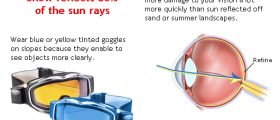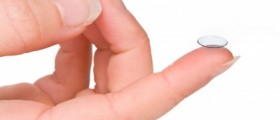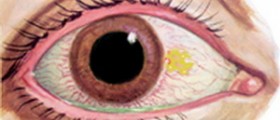
Symptoms of keratoconus
In the majority of cases, the symptoms of keratoconus start to appear in the adolescences ages. Certain experts are of thought that the signs of this condition begin to notice when growth stops, which usually occurs between 16 and 21 years of age. One of the first symptoms of keratoconus is allergy or itching. Because of this itching, a person frequently rubs the eyes. Certain researches have been carried out and the results have proven that those who rub their eyes more often have the greater chances to develop keratoconus. Furthermore, a person with this condition must change the glasses more often. It is also not unusual that stigmatism, and myopia aggravate during this period of keratoconus.
While keratoconus is in the early stage of its progress, a person may also discover that his/her visual acuity is reduced. The blurred or double vision, as well as squinting, are very frequent symptoms of this condition. We can see those with keratoconus to walk around in a permanent squint. Other symptoms of keratoconus are photophobia, glare and haloes. It is normal that infected cornea reacts to the light, especially sunlight or other bright light. On the other side, glare and haloes are mostly annoying while driving at night.
All these symptoms may be the same symptoms for some other eye disorder. If a person has the mentioned symptoms, it does not mean that he/she suffers from keratoconus. Therefore, a qualified eye doctor must do a careful analysis and cautiously diagnose keratoconus. Cornea must be inspected completely under the microscope. A doctor specialized in eye problems is called an ophthalmologist.
Causes of keratoconus
Kertoconus is an eye condition that is more frequent in women than in men, and the main causes for the appearance of this eye disorder are an eye injury or inherited abnormality of cornea. Furthermore, keratoconus may appear as the consequence of certain eye diseases, such as pigmentosa, or retinopathy of prematurity. Noonan syndrome, Down's syndrome, Ehlers-Danlos syndrome, and Leber's congenital amaurosis are some of the medical conditions that may provoke the occurrence of keratoconus.
Treatment of keratoconus
When it comes to the treatement of keratoconus, in the majority of cases, the cornea is stabilized after a few years, and it does not leave any serious consequences to vision. The use of hard contact lenses is a temporary measure for keratoconus. The corneal transplant is recommended if a person wants to completely cure this condition.

















Your thoughts on this
Loading...